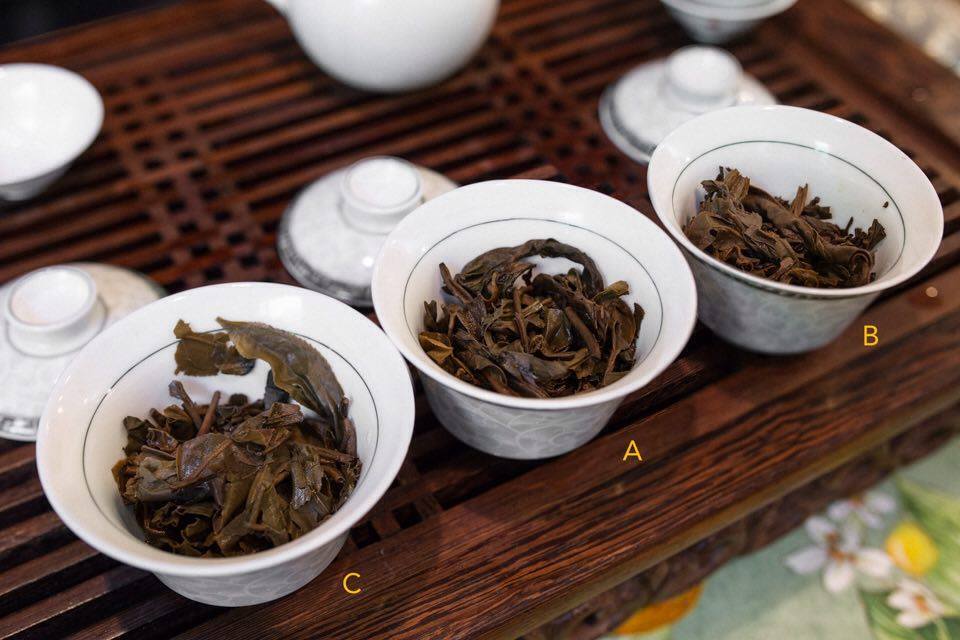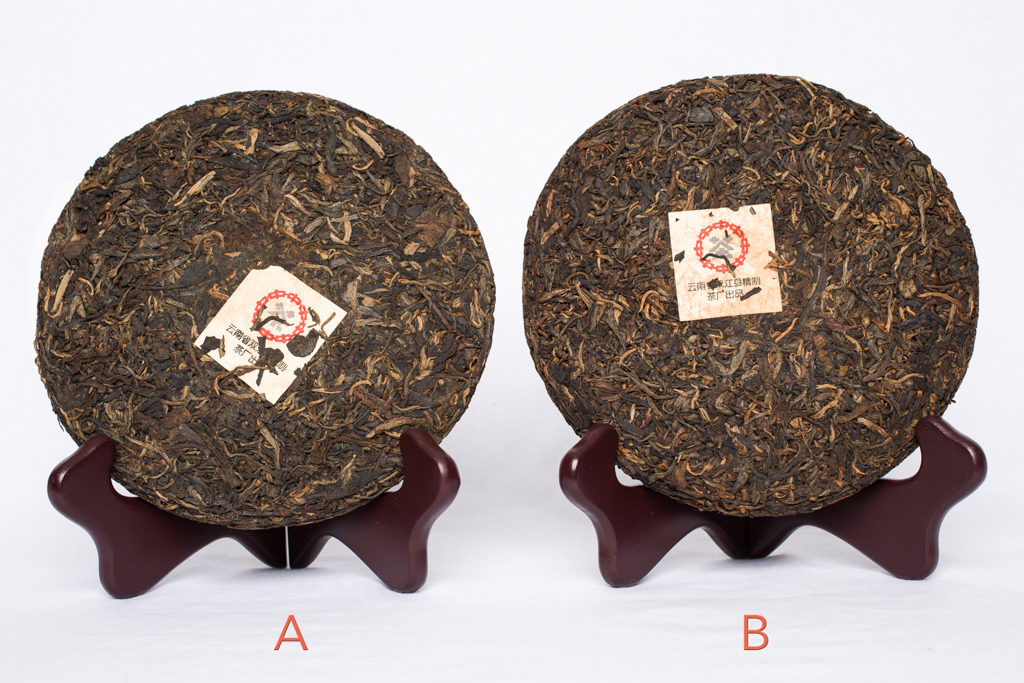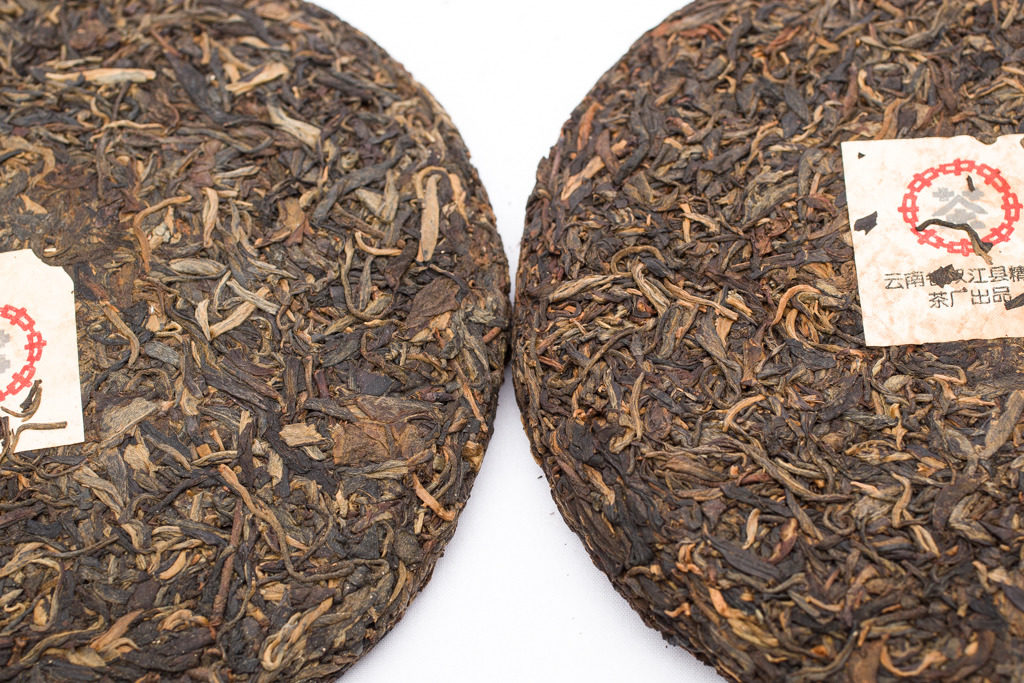In response to my post about the YYX, one reader suggested that Phyll and I should do a Google hangout session. Google hangout is useful, but it’s not ideal for tea session – the most important issue is that you are not drinking the same cup. Even if you measure everything down to the exact decimal and brew using the exam same parameters and the same teaware, at the end of the day you’re not drinking from the same leaves and so will not share exactly what you have. Drinking in person is always better.
So obviously, the solution is for me to fly to LA and join Phyll and Will to have a tea session together instead. Will’s joining is fortuitous – not just because he’s another old tea friend from the area, but because he also possesses a few cakes of YYX – in his case he bought it from the Best Tea House directly in 2010, and then stored in his home in LA ever since. So in some ways his tea offers yet another example of differing storage of YYX. His storage condition can be called natural – while it was briefly stored in a pumidor, for most of its life the tea has just sat in a (mostly) closed cabinet in his home in Los Angeles with no additional moisture. I’d presume it’s air conditioned in the summer months.
We started our session with the comparison tasting – it would be bad otherwise if we leave it to the middle or the end of the session, when we might already be tea-fatigued. Instead of drinking it, say, competition style, we decided to drink them serially. Will’s was the first. One of the most obvious things to note about his sample is that it has some smoke – the smoke is fairly obvious and is noticeable even before brewing. The tea’s astringency and bitterness come through. Once you swallow it turns to a nice huigan that has some legs. We didn’t use a lot of leaves – 4g for a small gaiwan. We drank about 7-8 infusions before it becomes more or less flavoured sweet water, at which point we moved on. The wet leaves for Will’s sample are still greenish in tone (C in the photo).
Second up was Phyll’s (A). There is one problem with Phyll’s tea, stored in his offsite wine cellar. The wine cellar uses wood drawers for the storage unit, and over the years it seems like the tea has picked up a fair amount of the wood smell. It was apparent to me when I unpacked the cake that was sent to me by Phyll, and I notified him as much. Leaving it around my house for two months before tasting it didn’t really diminish the wood smell, so it will probably take longer for it to happen. The wood smell and taste dominates the first few infusions, overpowering almost everything else. The tea is smoother than Will’s, with less astringency and less obvious bitterness, although that may have something to do with it being the second tea we’re drinking (the bitterness, anyway). There’s no aroma that is discernible because of the strong wood smell. The leaves are noticeably darker with a slightly more leathery texture. After about 4-5 infusions the wood smell/taste recedes and some of YYX’s base notes show up, similar to Will’s tea. In that they are not too different. The wet leaves are dark.
My cake came third in our tasting (B in photo). The first thing that Will noticed, as he was the one prying the tea from the cake, was that it was looser – the cakes have loosened over the years and it’s easier to pry open. I noticed the same when I tried the tea at home. The tea has lost any sense of astringency and is also not very bitter anymore. There is some fruity/plummy taste, and sweet in the back. There’s also a touch of sourness. The body seems slightly thinner, and as Phyll notes it’s lost the vibrancy of youth in comparison with the less-aged samples. Once you drink enough infusions, the tea reverts to similar base notes that you find in the other YYX we tried already, with maybe a touch more age to it than the others. The wet leaves are about the same colour as Phyll’s, surprisingly.
So, what’s there to learn here? Well, first, that there is a real difference among the teas. However, the differences are not huge – they are easily discernable to anyone who’s paying attention, but you can also tell, after some drinking, that they have the same base. Mine is the furthest along in the aging path – there’s no doubt about that. It has developed some of the notes that you start to get when a puerh has been aged long enough – plum, fruit, etc, and lost that more floral and astringent character of younger teas. Environment certainly matters – if you don’t believe that the smell of the storage environment can change how a tea tastes, a smell of Phyll’s cake will convince you otherwise. He’s already moved the cake out of the storage, but it will probably be some time yet before it can actually get rid of that smell, and chances are there will always be a trace of it remaining given how long it’s been in contact with that smell.
I do wonder how much aging has happened to Will’s cake – is it more or less in the same condition as when he bought it in 2010? The existence of smoke, the green wet leaves, and the astringency suggest that not a lot of aging has happened since. It’s great if you love your tea young, but I also suspect that it’s not so good if you like your teas aged and mellow. The tea doesn’t taste like a 15 year old tea.
Phyll’s cake, despite the extra wood smell, is smoother than Will’s. The 10 years it spent in the offsite storage with relatively higher humidity has done something to the tea. The low temperature probably prevented it from being more aged-tasting. It’s an interesting mid-point between Will’s tea and mine, and altogether somewhat different.
It will be interesting to try Phyll’s cake again after say a year or two, let the wood air out, and see if it changes/improves. It will also be interesting, now that I possess a cake, to see how the one stored in Hong Kong will diverge from the ones stored in LA. Maybe we can report back on this experiment after another year or two and see what happens then.
As for the rest of the tea session, we drank a mid 90s 7532Â that tastes somewhat cooked due to storage conditions, the 2005 Yisheng that tastes classically Yiwu, 2006 Yangqing Hao Chawangshu, which is similar to the Yisheng except even smoother, but for me lacking a punch. We finished off with a very high end dancong that I procured a while ago that has exceptional qi. The teas were all decent, but it’s the companionship that is the best. It’s good to see old friends again, and now we all have old(ish) tea to share. I look forward to our next tea session!





 RSS - Posts
RSS - Posts
I took you at your suggestion and have been reading some of your old post-Covid posts. I haven’t been to…